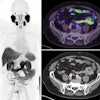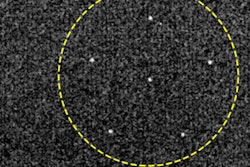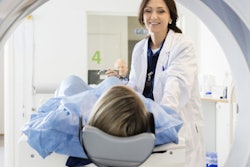
U.K. researchers have developed a new CT scanning method that produces the same image quality while also reducing radiation dose, according to a study published on 23 July in Physical Review Applied.
The technique, called cycloidal CT, addresses two challenges, wrote a team that included senior author Alessandro Olivo, PhD, of the University College London.
"This new method fixes two problems," he said in a statement released by the university. "It can be used to reduce the dose, but if deployed at the same dose it can increase the resolution of the image."
About 5 million CT scans are conducted in the U.K. each year, while in the U.S., the annual number of CT scans is more than 80 million, Olivo and colleagues noted.
To address the problem of radiation dose, the team developed the cycloidal CT technique, which splits a CT scanner's full x-ray beam into smaller ones by putting a mask cut with small slits over the beam to create "beamlets" (the mask was made by electroplating gold strips onto a graphite base).
The investigators moved a scanning phantom made up of polyethylene spheres in a way that mimicked the x-ray beam rotation that occurs in a CT exam; the method included backward and forward motion. The current study compared this new technique with conventional CT scanning methods that involve directing a full x-ray beam onto the surface to be imaged.
"The use of beamlets enables a sharper image resolution, as the part of the scanner 'reading' the information from the x-ray is able to locate where the information is coming from more precisely," the university statement said.
The cycloidal CT technique can be adjusted with changes to the mask, according to Olivo.
"The sharpness of the image can be easily adjusted using masks with different-sized apertures, allowing greater flexibility and freeing the resolution from the constraints of the scanner's hardware," he said.
The new CT scanning method shows promise for better patient care, lead author Charlotte Hagen, PhD, also of University College London, said in the statement.
"Being able to reduce the dose of a CT scan is a long-sought goal," Hagen said. "Our technique opens new possibilities for medical research and we believe that it can be adjusted for use in medical scanners, helping to reduce a key source of radiation for people in many countries."



















